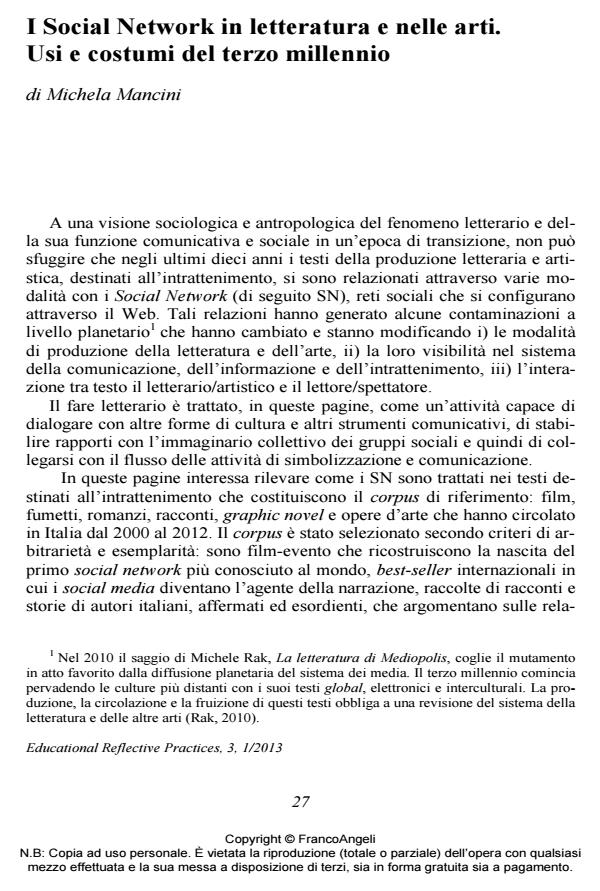I Social Network in letteratura e nelle arti. Usi e costumi del terzo millennio
Journal title EDUCATIONAL REFLECTIVE PRACTICES
Author/s Michele Mancini
Publishing Year 2013 Issue 2013/1
Language English Pages 11 P. 27-37 File size 169 KB
DOI 10.3280/ERP2013-001003
DOI is like a bar code for intellectual property: to have more infomation
click here
Below, you can see the article first page
If you want to buy this article in PDF format, you can do it, following the instructions to buy download credits

FrancoAngeli is member of Publishers International Linking Association, Inc (PILA), a not-for-profit association which run the CrossRef service enabling links to and from online scholarly content.
This essay describes how social networks (SN) are tackled in texts dedicated to entertainment, which represent the reference corpus: movies, comics, novels, short narratives and artistic masterpieces that have circulated in Italy from 2000 to 2010. Throughout a multidisciplinary approach, which sets its premises in literary theory and criticism, fictional texts are considered as devices able to dialogue with other cultural texts and with other communication tools, to establish relationships with the public imagery, and to connect with the general flow of activities related to signification and symbolization. Main argument is that the analysis of mentioned corpus showed how SN configure an icon documenting new behavioural models typical of certain third millennium cultures, for they represent and establish new ways of social interaction interesting for both humanities (literature, arts) specialists and everyone committed with information, communication, education.
Michele Mancini, I Social Network in letteratura e nelle arti. Usi e costumi del terzo millennio in "EDUCATIONAL REFLECTIVE PRACTICES" 1/2013, pp 27-37, DOI: 10.3280/ERP2013-001003